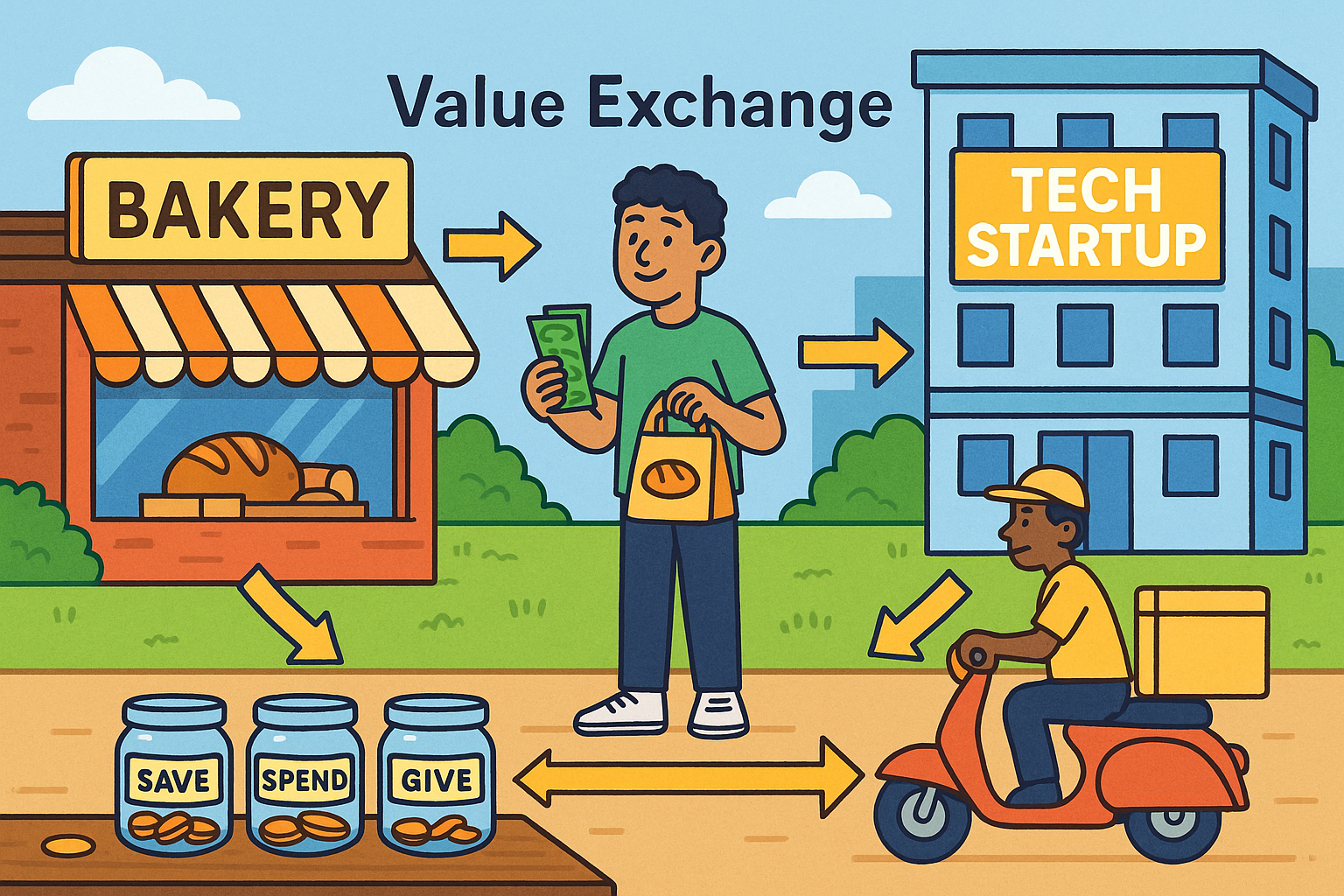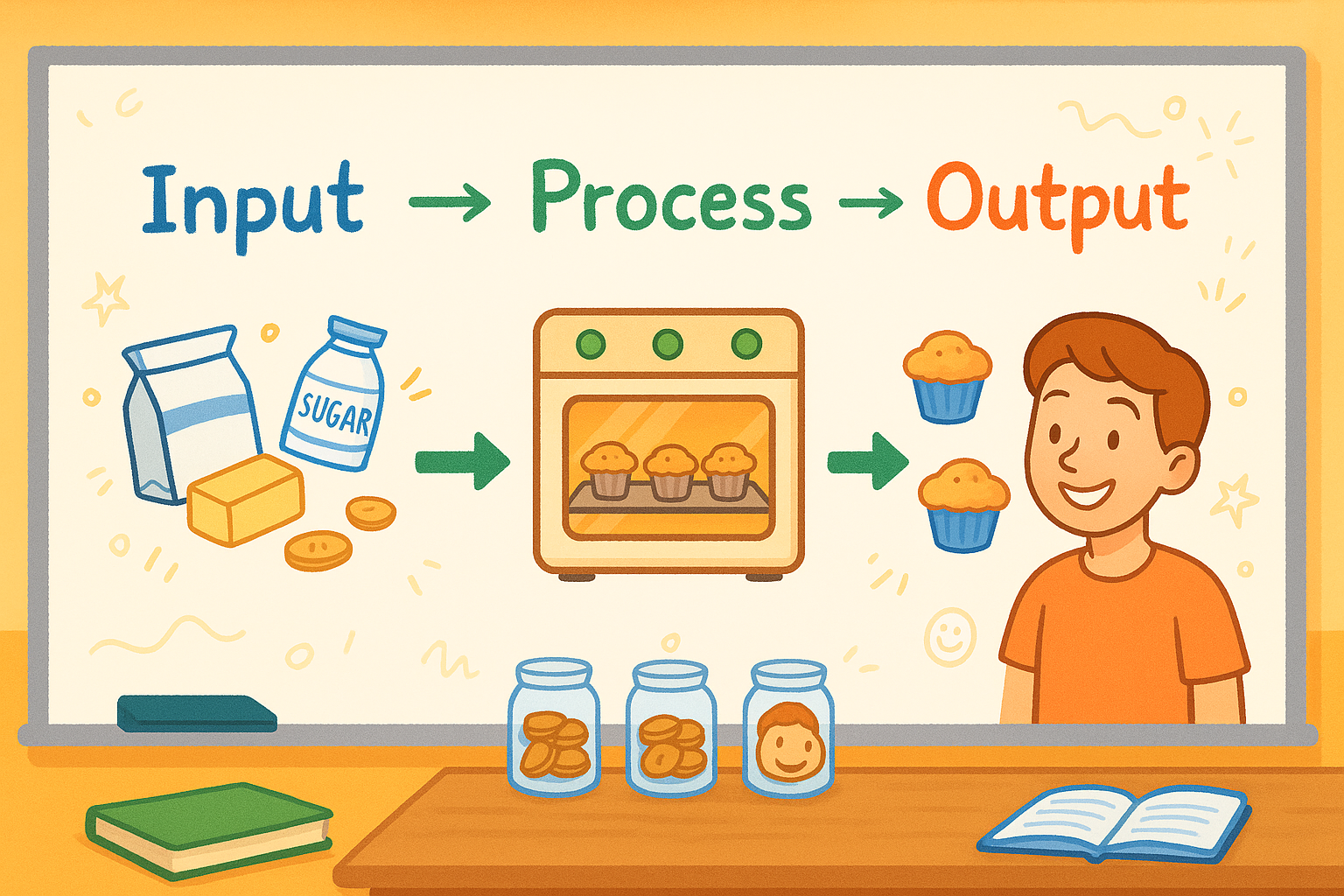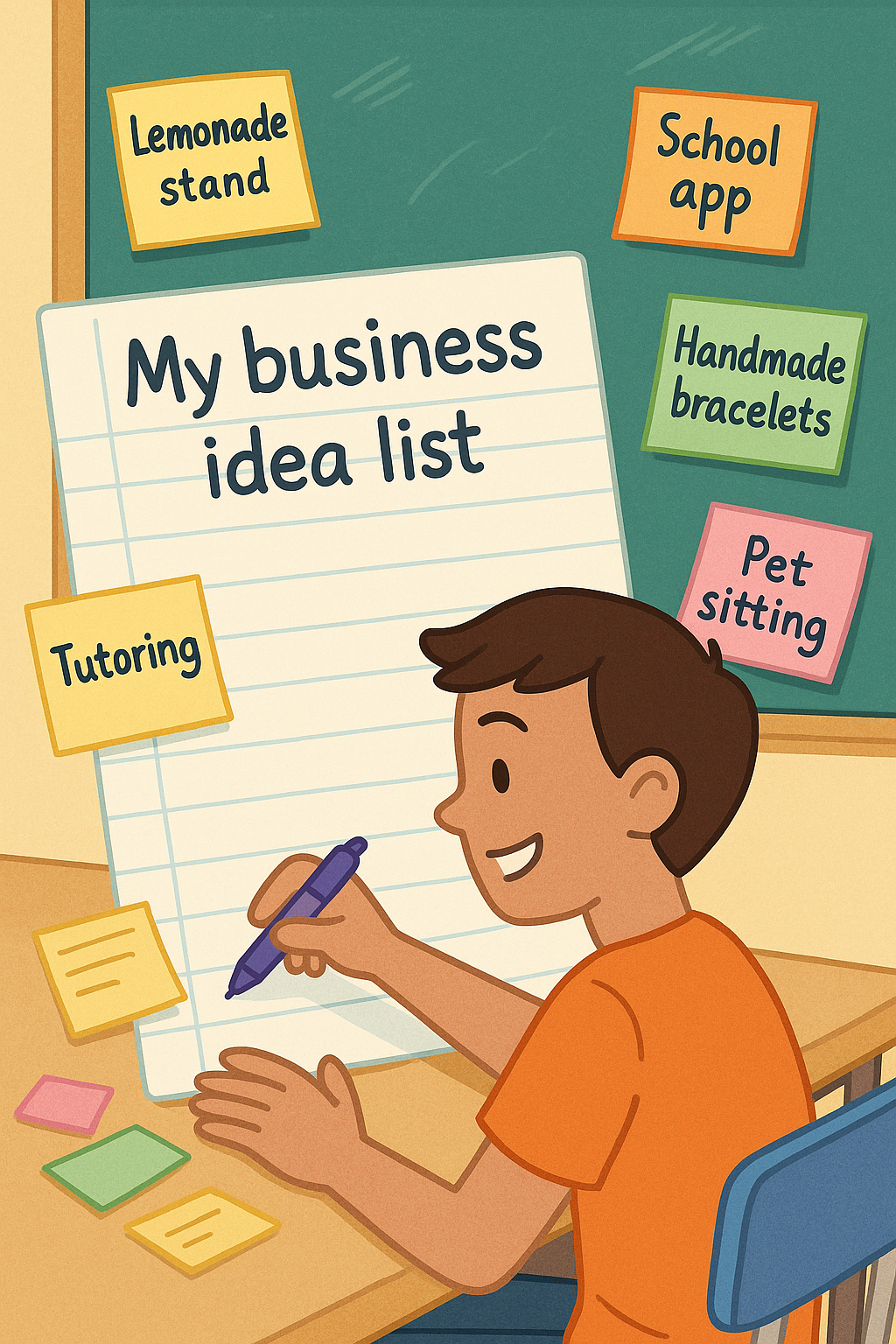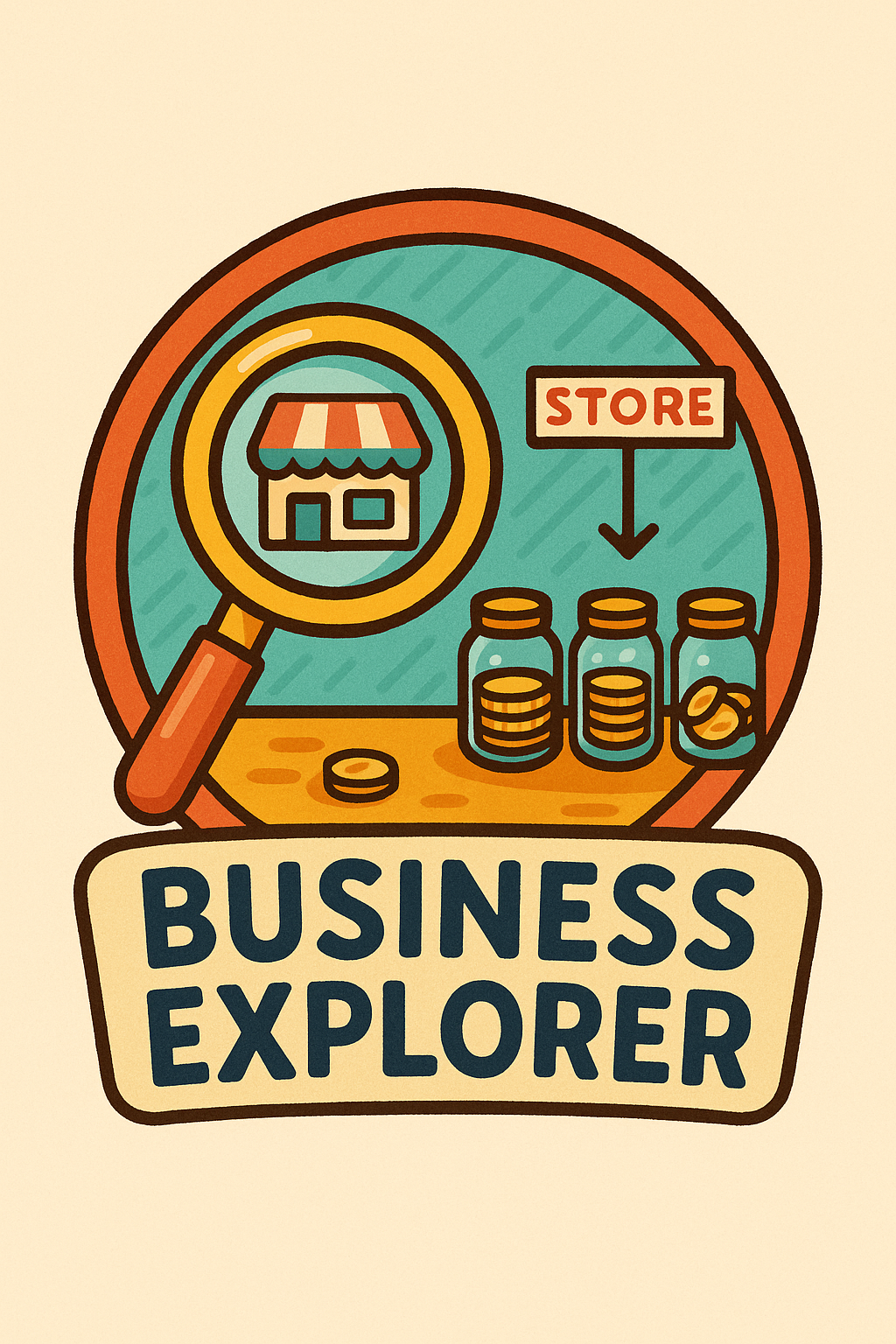🏪 What Is Business?
“Business is not about money. It’s about creating value.”
— Peter Drucker
Welcome to your first lesson in the world of business!
You might think business is only about making money — but in truth, it’s about solving problems and making life better for people.
💬 The Simple Definition
A business is any activity where people:
- Create or offer something useful (a product or a service),
- Share it with others,
- And receive something in return (usually money).
That’s it!
When a local bakery sells bread, or a student designs logos online — that’s business.
🏙️ Everyday Examples
Look around you right now — almost everything you see exists because of business:
- The phone or laptop you’re reading this on? Made by a company.
- The internet connection? A service you or your family pay for.
- The chair you’re sitting on? Someone designed, built, and sold it.
Business is the engine that keeps our daily life moving.

Value Exchange in action — businesses, customers, and services all connected through the flow of goods, money, and ideas.
🧠 Why Businesses Exist
Businesses exist because people have needs and wants.
- Needs → things we can’t live without (food, shelter, clothing, safety).
- Wants → things that make life easier or more enjoyable (smartphones, ice cream, Netflix).
A successful business finds a way to:
- Understand what people need or want,
- Offer something that meets those needs,
- Do it in a way that’s sustainable (so it can continue and grow).
🍋 A Real-Life Example
Let’s imagine Lina, a 16-year-old student.
She notices her classmates often forget to bring snacks to school.
So she starts bringing homemade lemon muffins and selling them during breaks.
At first, it’s small — a few friends buy from her.
But soon, she realizes:
- She needs to calculate her costs (ingredients, packaging),
- She can earn a small profit,
- She can improve the recipe and branding.
That’s it — Lina is running a micro-business.
📈 The Value Chain (Simple Version)
Every business goes through three basic steps:
| Step | What Happens | Example |
|---|---|---|
| 1️⃣ Input | Getting resources (materials, knowledge, time) | Buying flour for muffins |
| 2️⃣ Process | Turning inputs into something valuable | Baking muffins |
| 3️⃣ Output | Selling or delivering the result | Selling to classmates |
Even large companies follow the same logic — just on a massive scale.

Input → Process → Output — a simple model showing how businesses turn resources into products that create value for customers.
💰 Profit and Value
Here’s the secret:
Businesses survive not only by making profit, but by creating value.
- Profit = what’s left after paying all costs.
- Value = the benefit people feel from your product or service.
When customers believe your product gives them more value than what they pay, they’re happy — and your business grows.
Example:
Lina sells muffins for $2 each.
They cost her $1 to make.
Her classmates enjoy them, and she earns $1 per muffin.
Everybody wins.
🌍 Different Types of Businesses
| Type | Example | Purpose |
|---|---|---|
| For-profit | Apple, Nike, a local store | Earn profit for owners |
| Non-profit | Red Cross, school fundraisers | Help people or support a cause |
| Social enterprise | A company that donates 1 pair of shoes for every pair sold | Mix of business + social good |
Businesses can be tiny (one person selling art) or global (Amazon).
But they all share one thing — they create value for others.
🧠 Quick Reflection
Ask yourself:
- What products or services do you use daily?
- Why do you choose them — price, quality, brand, or trust?
- Could you imagine creating something people would pay for?
Write down 3 ideas of things that make your life easier or happier.
Those are potential business ideas.

Brainstorming business ideas — from lemonade stands to school apps, every great company starts with a simple idea.
🧩 Key Takeaways
- A business solves problems or fulfills needs.
- It offers goods or services that people value.
- It earns money in exchange, but money is not the main goal — value creation is.
- Anyone can start small — even students.
🧪 Mini-Exercise: “Business Detective”
Over the next 24 hours, look around your home or neighborhood and list 5 businesses you interact with.
For each one, note:
- What do they sell?
- What problem do they solve?
- Why do you (or others) buy from them?
You’ll start to see how everything around you connects to business.
🎯 What’s Next?
Next week, you’ll learn how money moves in and out of a business —
how to earn, save, spend, and track it like a smart entrepreneur.
👉 Continue to Lesson 2 → Money Management Basics
🏆 Reflection Badge: Business Explorer
Complete this lesson and the “Business Detective” activity to earn your Business Explorer Badge on your profile.

Business Explorer Badge — awarded for completing the first lesson and exploring how businesses create value.
📚 Summary
| Concept | Meaning |
|---|---|
| Business | Activity that creates and exchanges value |
| Product | A physical good (e.g., phone, bread) |
| Service | Something done for others (e.g., haircut, tutoring) |
| Profit | What remains after paying costs |
| Value | The benefit people get from what you offer |
💬 Final Thought
“You don’t need to be an adult to understand business.
You just need curiosity — and the courage to ask how things work.”
📝 Try this today
Find 5 businesses near you and note what problem they solve.
Write down 3 business ideas that could help people in your community.
Sketch a simple value chain — what you use, what you make, and who benefits.
Lesson Progress
Module: foundations · +0% upon completion